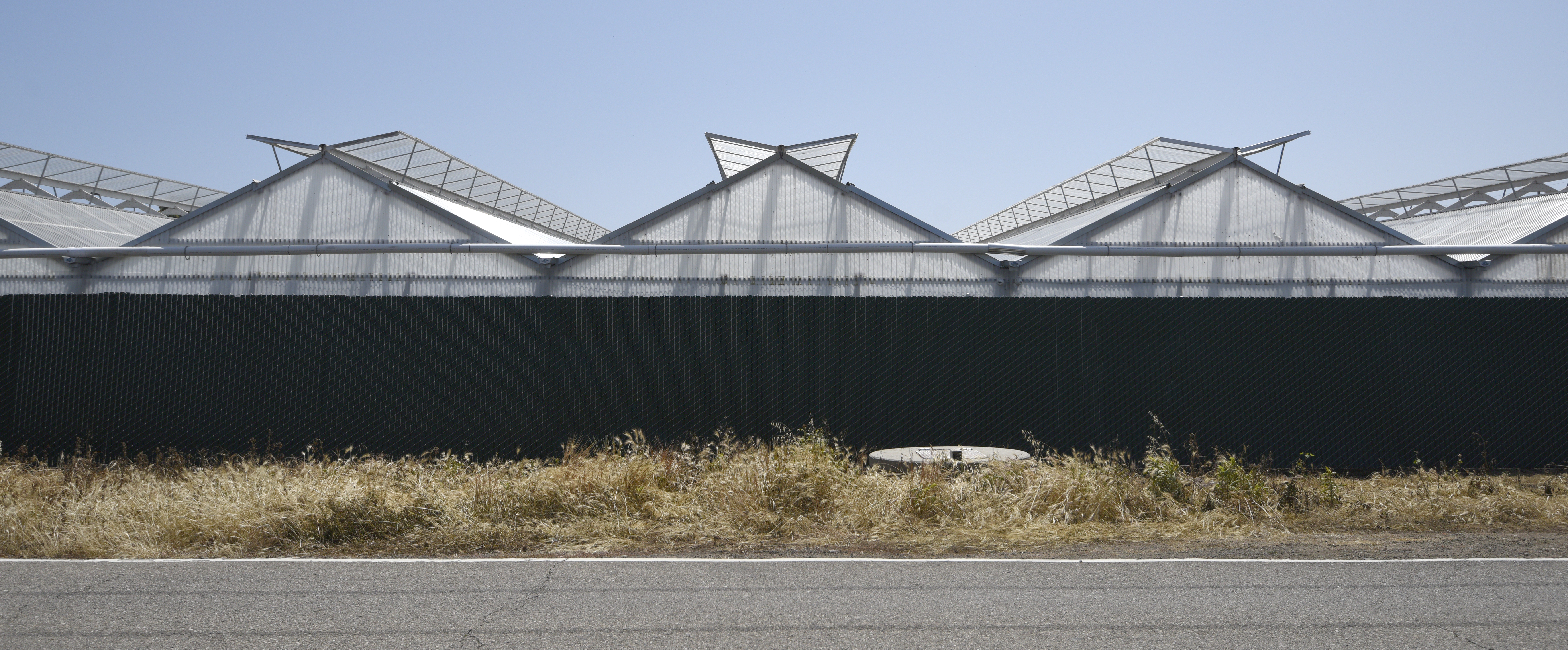Greenhouses — Maybe Not So Green?
A Sterile Wasteland Built of Concrete, Plastic, and Steel

Our family began farming avocados on seven acres in the Carpinteria Valley in the late 1950s. Over the years, we have added small parcels of land, knitting together what has become a commercial, family-owned business. Avocados, lemons, and cherimoyas are our mainstays and provide a diverse balance that helps even out the ups and downs of the produce markets.
Some of our orchards are certified organic, requiring an annual third-party audit. Other orchards are conventionally farmed, not restricted by the stringent organic protocols that limit the use of programs such as Best Management Practices (BMP) and Integrated Pest Management (IPM), which allow us to combine the best aspects of organic and conventional techniques. We strive for becoming truly sustainable in our production methods, where high fruit quality, low costs of production, and minimal adverse environmental impacts are achieved.
Over the years, we have watched Santa Barbara agriculture change, particularly in regard to the ever-increasing conversion of large tracts of land covered by greenhouses, hoop structures, and acres of plastic tarps. Is this the future of agriculture, where factory farming, production volume, and artificial environmental control are paramount?
In the Carpinteria Valley, many open field and orchard lands have been lost to greenhouses, ushering in an era, first of flower production and later even tomatoes, cucumbers, and “living” lettuce. More recently, many of these greenhouses have been repurposed to grow cannabis. Promises of huge profits and tax revenue have lured growers, investors, and local regulatory agencies into allowing this conversion in exchange for several adverse impacts to the community and its residents, including local farming businesses.
The smell, often compared to that of a skunk, does the innocent animal an unwarranted disservice, since his is only spotty and occasional, whereas the cannabis smell is all-pervasive and ever-present. Other impacts of security, traffic, parking, and, in my business, limitations on our farming practices that add to our costs and dis-competitiveness. In response to these problems, the cannabis industry has made claims of less water use, lower electricity demands, employment opportunity, and, in some cases, lower or no pesticide use. I ask, in comparison to what?
In addition to being a visual blight to the otherwise green and open farming landscape, greenhouses begin their life in a state of environmental deficiency. They are a sterile wasteland built of concrete, plastic, and steel, awaiting the day that they become obsolete and have outlived their usefulness. They will then be demolished and hauled away to the landfill and scrap pile. I suppose that some parts can be recycled, but how much and into what?
It has been reported that the electricity demand to support these plant factories and to run all the pumps, motors, fans, lights, temperature and humidity controls could easily exceed the grid’s capacity. The operators say they will become more efficient — as compared to a few water pumps and wind machines in open farmland, or compared to the sucking demand that is predicted to dim the lights throughout the valley?
The ground beneath greenhouses is lifeless, compacted and covered by asphalt, concrete and gravel. In many cases, no native soil is used to grow, only introduced soil mediums and substitutes. Some claim that water is recycled and reused, but what about the millions of gallons of rainfall deflected that never reach the soil? The greenhouse sheds all rainfall to gutters and diversion systems instead of entering naturally to percolate through the soil to recharge the ground water. The wastes, effluents, and contaminants, both from the water recycling system and the production process, are concentrated and disposed of down the drain or out to ditches and sumps. The air, thick with an aerosol of nauseating stench, is exhausted out to plague neighbors and the community 24/7. The so-called odor control systems are untested, seem ineffective in containing the stench, and use chemicals that may add to the adverse effects of breathing and respiratory problems.
The Agricultural Commissioner’s office has public records reporting the use of several pesticides by the cannabis grows. If pesticide sprays are not used, as some claim, we are told that thousands of dollars of beneficial insects are used to control pests. These must be replenished regularly since none can survive and reproduce in this artificial, environmental vacuum.
Attempts are made to tout the employment benefits of these operations. However, remember that there was a business there before, employing many, without exposing them to the unknown and potential health risks associated with the cultivation of cannabis in such a concentrated, enclosed workplace. Clearly the desire of the operators is to mechanize and automate as quickly as possible, leaving present workers to find other employment.
Compare all this to an avocado or other fruit orchard — a vibrant, ecological environment where the tree canopy creates a mild, shaded microclimate, teeming with wildlife, insects, and microorganisms. Birds, butterflies, spiders, and more flourish in the upper story. The ground is crawling with beetles, lizards, and the like. The soil is a constant mulching machine, where worms, earwigs, ants, bacteria, and other microorganisms are processing the leaves and twigs into a rich, fertile soil. Rain falls and is immediately absorbed, typically only running off from the few compacted roads and loading areas.
And yes, occasionally a spray, beneficial insect release, or other practice may be needed if this natural balance gets out of whack. So, for a short time, there may be a disturbance until the orchard is restored to its normal life cycle, pulling in CO2, sunlight, and water to filter our air, while providing oxygen, greenscape, and the healthy nutritious avocado fruit, not to mention being a good neighbor to our community.



